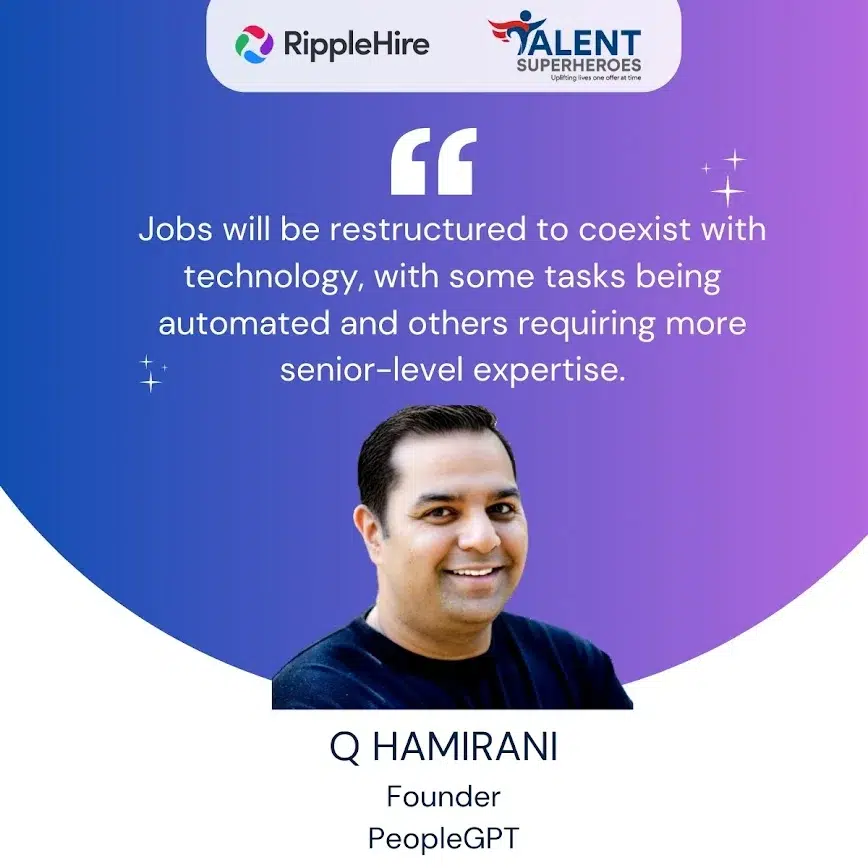As AI continues to evolve, its influence on job structures, required skills, and organizational dynamics is being transformed. RippleHire founder Sudarshan Ravi spoke to PeopleGPT founder Q Hamirani had a candid discussion on how AI is reshaping traditional HR functions, from automating tasks to redefining roles, and discussed the urgent need for HR and Talent Acquisition leaders to build expertise and adapt strategies.
Q Hamirani is a distinguished business leader and executive coach with over 20 years of experience across startups, venture growth, private equity, and Fortune 100 companies in 25+ countries. He’s a Forbes contributor, recently featured with his article on AI in HR, and a guest faculty member at London Business School. As the founder of a thriving community of people leaders and AI enthusiasts, Q has also made significant impacts at Paper as Chief People & Communication Officer and at Airbnb as its first global People Operations leader. Passionate about personal growth and the arts, Q combines his extensive expertise with a commitment to innovation and creativity.
How do you think AI will change HR?
How critical is it for HR and TA leaders to build expertise immediately, given the rapid changes in technology and the unclear end state? How can they help their organizations navigate this transformation effectively?

How do you see jobs being restructured in organizations as they align more with candidate personas?
How can organizations leverage AI-generated capacity to accelerate growth and innovation?
How does AI-driven commoditization of basic tasks impact human creativity and innovation?
How can organizations implement safeguards to prevent AI from generating incorrect or misleading information?
Why can’t HR take ownership of enabling AI change within the organization?
HR can handle some aspects of AI implementation, such as setting broad usage guidelines, consolidating tool access, and ensuring consistent adoption. HR is well-suited for change management and establishing policies, like prohibiting the sharing of employee data. However, HR cannot fully own the development and testing of specific AI tools, particularly those used outside HR functions. Functional leaders should take responsibility for experimenting with and deploying these tools. While HR can centralize change management and support new talent and resources, functional owners must ensure proper integration and business impact assessment. Thus, HR has an umbrella role in overseeing AI adoption, while individual functions manage their specific tools and deployment.




